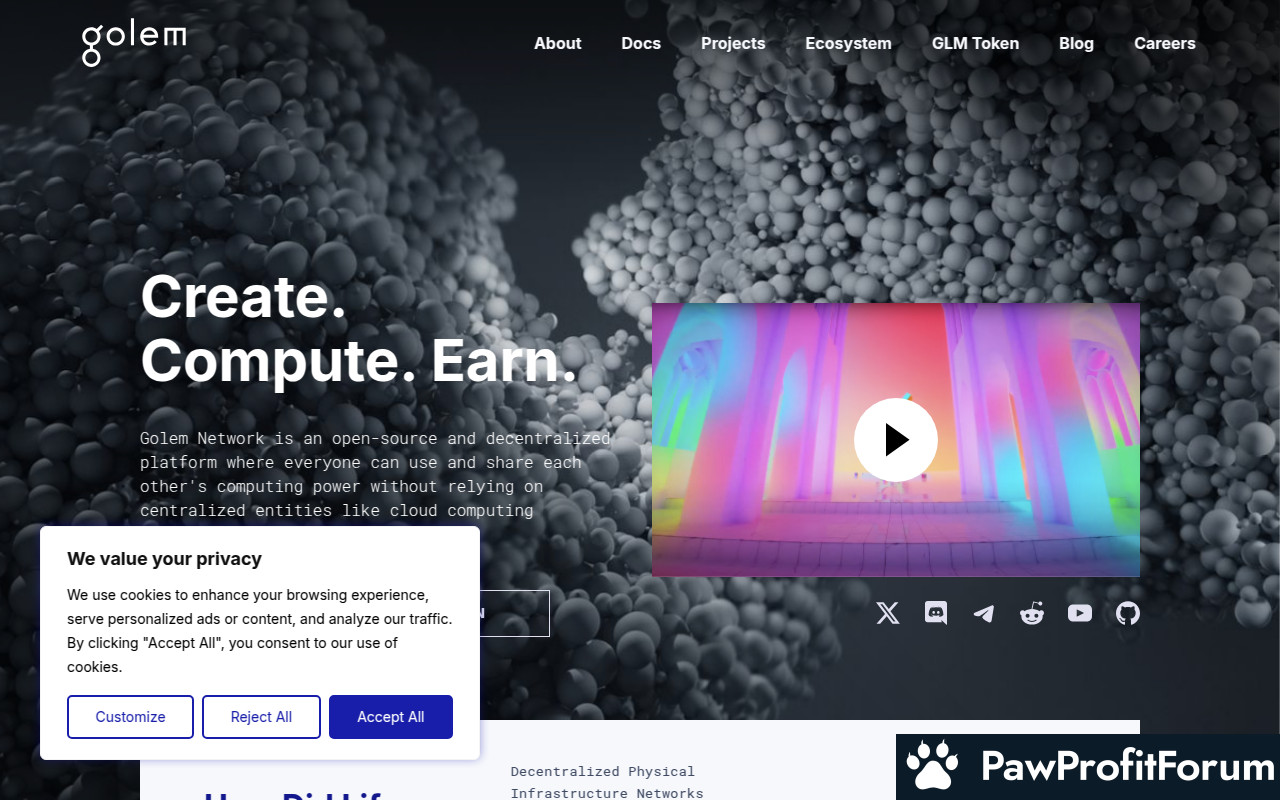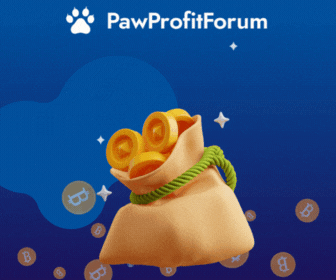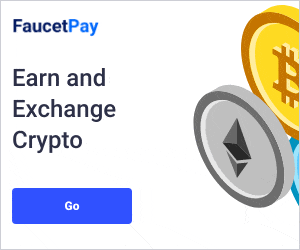What Is Golem Network?
Golem Network is an open-source, decentralized computing platform that is building an ecosystem to provide computing power to the AI industry. A peer-to-peer marketplace for distributed computing resources. Users engage directly on the Golem platform, exchanging GLM tokens for the utilization of their idle computing resources.Golem allows to break down tasks into smaller subtasks and distribute them across multiple providers, enabling parallel processing. This approach boosts efficiency and speeds up the completion of complex computations.
What Is Golem Network?
Golem Network is an open-source, decentralized computing platform that is building an ecosystem to provide computing power to the AI industry. A peer-to-peer marketplace for distributed computing resources. Users engage directly on the Golem platform, exchanging GLM tokens for the utilization of their idle computing resources.Golem allows to break down tasks into smaller subtasks and distribute them across multiple providers, enabling parallel processing. This approach boosts efficiency and speeds up the completion of complex computations.
What is GLM?
GLM or Golem Network Token is needed to pay for computations on the network and is the currency that drives the marketplace. As a Requestor, you set a bid for an amount of GLM you are willing to pay to have your task completed. As a Provider, you earn GLM by computing tasks for Requestors.How can I get involved?
If you want to stay up to date with the latest developments and updates, join the Golem Network Discord community here: https://chat.golem.network/On Discord you can also find support to become a Provider or a Requestor in the Golem platform.
What is Golem?
Golem is a decentralized platform that democratizes access to computing power, enabling users to share their unused resources or access additional resources as needed. It operates on the Ethereum Mainnet and uses the Golem Network Token (GLM) for transactions. This blockchain-based software facilitates the buying and selling of computational power for various purposes, including artificial intelligence, cryptocurrency mining, CGI rendering, and other complex computations.The Golem Network functions as an open-source, peer-to-peer marketplace for distributed computing resources. Users engage directly on the platform, exchanging GLM tokens for the utilization of idle computing resources. This decentralized approach allows tasks to be broken down into smaller subtasks and distributed across multiple providers, enabling parallel processing. This method significantly boosts efficiency and speeds up the completion of complex computations.
GLM is essential for the Golem ecosystem, serving as the currency that drives the marketplace. Requestors set a bid for the amount of GLM they are willing to pay to have their tasks completed, while Providers earn GLM by computing tasks for Requestors. This token-based economy ensures a seamless and efficient exchange of computational power.
Golem's innovative approach to decentralized computing power has the potential to revolutionize industries reliant on heavy computational tasks. By leveraging blockchain technology, Golem provides a scalable and efficient solution for distributing computational resources globally.
What is the technology behind Golem?
The technology behind Golem is a fascinating blend of decentralized computing and blockchain innovation. At its core, Golem is a decentralized platform that connects users worldwide, allowing them to share their unused computing power or access additional resources as needed. This is achieved through the Golem Network protocol, which leverages the Golem Network Token (GLM) as a medium of exchange.Golem operates on the Ethereum blockchain, which provides a secure and transparent environment for transactions. Ethereum's blockchain is known for its smart contract functionality, enabling automated and trustless agreements between parties. This ensures that when a user (Requestor) wants to buy computational power, and another user (Provider) offers their idle resources, the transaction is executed seamlessly and securely.
One of the key features of the Ethereum blockchain is its consensus mechanism, which helps prevent attacks from bad actors. Ethereum uses a proof-of-stake (PoS) system, where validators are chosen to create new blocks and confirm transactions based on the amount of cryptocurrency they hold and are willing to "stake" as collateral. This reduces the risk of malicious activities because validators have a financial incentive to act honestly.
Golem's decentralized nature means that tasks can be broken down into smaller subtasks and distributed across multiple providers. This method, known as parallel processing, significantly boosts efficiency and speeds up the completion of complex computations. For example, a Requestor needing to render a high-resolution video can have different frames processed simultaneously by various Providers, drastically reducing the overall rendering time.
The Golem Network also emphasizes security and reliability. Each task is verified through a system of redundancy and reputation. Multiple Providers may work on the same subtask, and their results are compared to ensure accuracy. Providers build a reputation over time based on their performance, which helps Requestors choose reliable partners for their computational needs.
In addition to its technical prowess, Golem fosters a vibrant community of developers and users. The platform is open-source, meaning anyone can contribute to its development or create applications that utilize its computing power. This openness encourages innovation and continuous improvement, making Golem a dynamic and evolving ecosystem.
The Golem Network Token (GLM) is essential for the platform's economy. Requestors set a bid in GLM for the amount they are willing to pay to have their tasks completed. Providers earn GLM by computing these tasks, creating a marketplace where computational power is bought and sold. This token-based system ensures that resources are allocated efficiently and that both Requestors and Providers are incentivized to participate.
Golem's potential extends beyond simple computational tasks. It aims to support a wide range of applications, from scientific research and machine learning to rendering graphics and running simulations. By democratizing access to powerful computing resources, Golem has the potential to drive innovation across various industries.
The Golem Network's architecture is designed to be robust and scalable. It can handle a growing number of users and tasks without compromising performance. This scalability is crucial for supporting the increasing demand for computational power in fields like artificial intelligence and big data analytics.
Golem's integration with the Ethereum blockchain also means it benefits from the broader Ethereum ecosystem. This includes compatibility with other decentralized applications (dApps) and services, as well as access to Ethereum's developer tools and resources. This interconnectedness enhances Golem's functionality and opens up new possibilities for collaboration and innovation.
The Golem platform is continuously evolving, with ongoing updates and improvements driven by its active community and development team. This commitment to progress ensures that Golem remains at the forefront of decentralized computing technology, offering users a reliable and efficient way to access and share computational power.
What are the real-world applications of Golem?
Golem Network is a decentralized computing platform that enables users to share and utilize computing power in a peer-to-peer marketplace. By leveraging the Golem Network Token (GLM), users can exchange computational resources directly, facilitating a wide range of real-world applications.One significant application of Golem is democratizing access to computing power. This is particularly beneficial for individuals and small businesses that may not have the financial resources to invest in expensive hardware. By tapping into the Golem Network, they can rent the necessary computing power to complete their tasks efficiently.
In the realm of scientific research, Golem accelerates projects by distributing complex computations across multiple providers. This parallel processing capability speeds up data analysis, simulations, and other computationally intensive tasks, enabling researchers to achieve results faster and more cost-effectively.
Golem also plays a crucial role in the AI industry. AI development often requires substantial computational resources for tasks such as training machine learning models. By utilizing Golem, developers can access the required computing power on-demand, making AI projects more accessible and scalable.
Another application is in the field of cryptocurrency mining. Golem allows miners to rent out their idle computing resources to perform mining operations for various cryptocurrencies. This not only maximizes the utilization of their hardware but also provides an additional revenue stream.
Furthermore, Golem facilitates seamless transactions between providers and requestors. The platform's decentralized nature ensures that transactions are secure and transparent, with GLM tokens serving as the medium of exchange. This setup eliminates the need for intermediaries, reducing costs and increasing efficiency.
The Golem Network's ability to break down tasks into smaller subtasks and distribute them across multiple providers enhances efficiency and speeds up the completion of complex computations. This approach is particularly useful for industries requiring high-performance computing, such as video rendering, data analysis, and scientific simulations.
What key events have there been for Golem?
Golem Network, an open-source, decentralized computing platform, has been a significant player in the blockchain and cryptocurrency space. It enables users to exchange GLM tokens for computing power, facilitating a peer-to-peer marketplace for distributed computing resources. This innovative approach allows tasks to be broken down into smaller subtasks, distributed across multiple providers, and processed in parallel, enhancing efficiency and speeding up complex computations.One of the earliest notable events for Golem was its official release on the Ethereum Mainnet in April 2018. This marked a significant milestone, allowing users to start utilizing the network for real-world applications. The launch was a culmination of extensive development and testing, showcasing the platform's capabilities in a live environment.
In the same year, Golem published its project in a scientific journal, further establishing its credibility and showcasing the academic rigor behind its development. This publication helped to solidify Golem's position as a serious contender in the decentralized computing space.
The Golem GPU Beta Testing Program was another critical event, launched to explore the potential of GPU computing within the network. This program allowed users to test and provide feedback on GPU-based tasks, paving the way for more advanced computational capabilities on the platform.
In 2020, the Golem team introduced Golem Amendment Proposals (GAPs) and released comprehensive Golem architecture documents. These initiatives aimed to enhance the network's governance and provide a clear framework for future development. GAPs allowed the community to propose and vote on changes, ensuring that the platform could evolve in a decentralized and democratic manner.
Strategic partnerships have also played a crucial role in Golem's development. The collaboration with GamerHash AI and Reality NFT in 2021 aimed to integrate Golem's computing power with gaming and NFT platforms, expanding its use cases and user base. Additionally, a strategic partnership with Polygon was established to enhance scalability and reduce transaction costs, making the network more efficient and accessible.
Updates to the Golem network protocol have been ongoing, with continuous improvements to enhance performance and security. These updates ensure that the platform remains competitive and capable of meeting the growing demands of its users.
The Golem Network continues to evolve, driven by a combination of technological advancements, strategic partnerships, and community involvement.
Who are the founders of Golem?
Golem Network, an open-source, decentralized computing platform, was co-founded by Aleksandra Skrzypczak, Andrzej Regulski, Julian Zawistowski, and Piotr Janiuk. These visionaries established Golem Factory in 2016, leading to the launch of the Golem Network in 2018. Skrzypczak, with her technical expertise, played a crucial role in the platform's development. Regulski contributed significantly to the project's strategic direction. Zawistowski, known for his leadership, guided the team through the initial phases. Janiuk, with his deep understanding of blockchain technology, ensured the robustness of the network.| Website | golem.network/ |
| Website | golem.network/doc/Golemwhitepaper.pdf |
| Socials | twitter.com/golemproject |
| Socials | reddit.com/r/GolemProject |
| Socials | github.com/golemfactory/ |
| Socials | chat.golem.network/ |
| Contracts | 0x7DD9...DA6429 |
| Explorers | etherscan.io/address/0x7DD9c5Cba05E151C895FDe1CF355C9A1D5DA6429 |
| Wallets | www.binance.com/en/web3wallet |
| Wallets | www.trustwallet.com/ |
| Wallets | www.ledger.com/ |
| Wallets | metamask.io/ |










